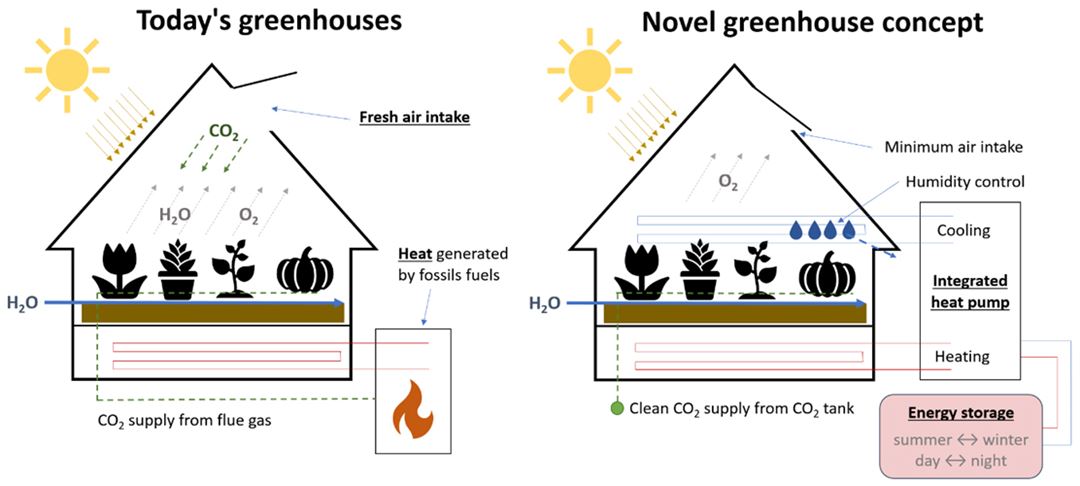In Romania, outdoor agricultural production is much more common than indoor crop production in greenhouses. However, the agricultural productivity per hectare is relatively low and the potential is underused. Greenhouse farming used to be quite common in Romania, but since the fall of the communist regime most greenhouses have become outdated and very inefficient.
ClimaGreen is a collaborative, multidisciplinary project between SINTEF, the University of Agronomic Sciences and Veterinary Medicine of Bucharest (USAMV), and Gether AS in Norway with the goal to increase the productivity of a Romanian research greenhouse through optimised indoor climatic conditions. The main objective is to demonstrate by proof of concept the integration of heat pumps and thermal energy storage in the operation of the USAMV greenhouse to minimise the energy usage in the control of the greenhouse climatic conditions. This will contribute to a more sustainable and energy-efficient operation of the greenhouse, while the overall productivity will be enhanced through increased growth of plants and vegetables.
Hot summer season and climatic conditions
The main challenge of the research greenhouse at USAMV is to maintain cool and optimal growing conditions during the hot summer season. With daytime temperatures occasionally reaching 35°C to 40°C in July/August, measurements have shown that the greenhouse temperature can rise to more than 65°C during the summer months. Such temperatures are clearly far too hot for greenhouse plants and vegetables. The growth and quality of the vegetable crop is seriously reduced long before reaching those extreme temperature levels, while plants will stop growing and perish.
A remedy to prevent the build-up of very high temperatures in the greenhouse is roof ventilation, by which the heated greenhouse air is exchanged with the cooler outside air. However, the ventilation system is sub-optimal and not sufficient for lowering the greenhouse temperature to more favourable levels. Other important parameters for the greenhouse climate are the humidity and CO2 concentrations, for which the control is lost by ventilation.
Plants need CO2 for the photosynthesis and hence CO2 enrichment has proven to have a very positive effect on the growth and the quality of plants. The most common method for adding CO2, however, is by combustion of fossil fuels in a central burner and supplying the greenhouse with the CO2-rich flue gas. In warmer climates when heating is not required this is not cost efficient, even if used in combination with a storage tank for the excess heat. In addition, the flue gas will contain CO and other noxious gases harmful both to the greenhouse plants and the environment, which will require an additional cleaning system.
From the perspective of the crop and plant growth research in the greenhouse, there is a strong need to improve and optimise the greenhouse climate also in the summertime.
Novel greenhouse concept
An efficient operation of a greenhouse requires a precise control of the climatic conditions defined by the temperature, humidity, and CO2 concentrations. For greenhouse operations in northern parts of Europe, the focus for controlling the temperature is on heating. With the climate of Romania, characterised by hot summers and cold winters, there is a need both for cooling and heating of greenhouses throughout the year.
A novel energy-efficient greenhouse concept will be implemented at the USAMV greenhouse where an integrated heat pump system will provide both cooling and heating as needed. The greenhouse humidity will be controlled through condensation, and the CO2 levels will be ensured by CO2 enrichment from an installed CO2 tank. In addition, the summer excess heat will be stored for winter usage by borehole thermal energy storage (BTES). This will be accomplished by drilling an array of 15 underground boreholes with a depth of about 120 m. In combination with the BTES, by taking advantage of a large underground water tank, short-term dynamic thermal energy storage will also be employed to utilise the temperature variations between day and night.


